
Dojo: Code Like a Warrior
Dojo is an innovative platform designed to make learning coding both exciting and rewarding. Drawing inspiration from martial arts, the platform incorporates gamification to encourage students to solve coding challenges and earn belts as they progress through different skill levels. 🚀
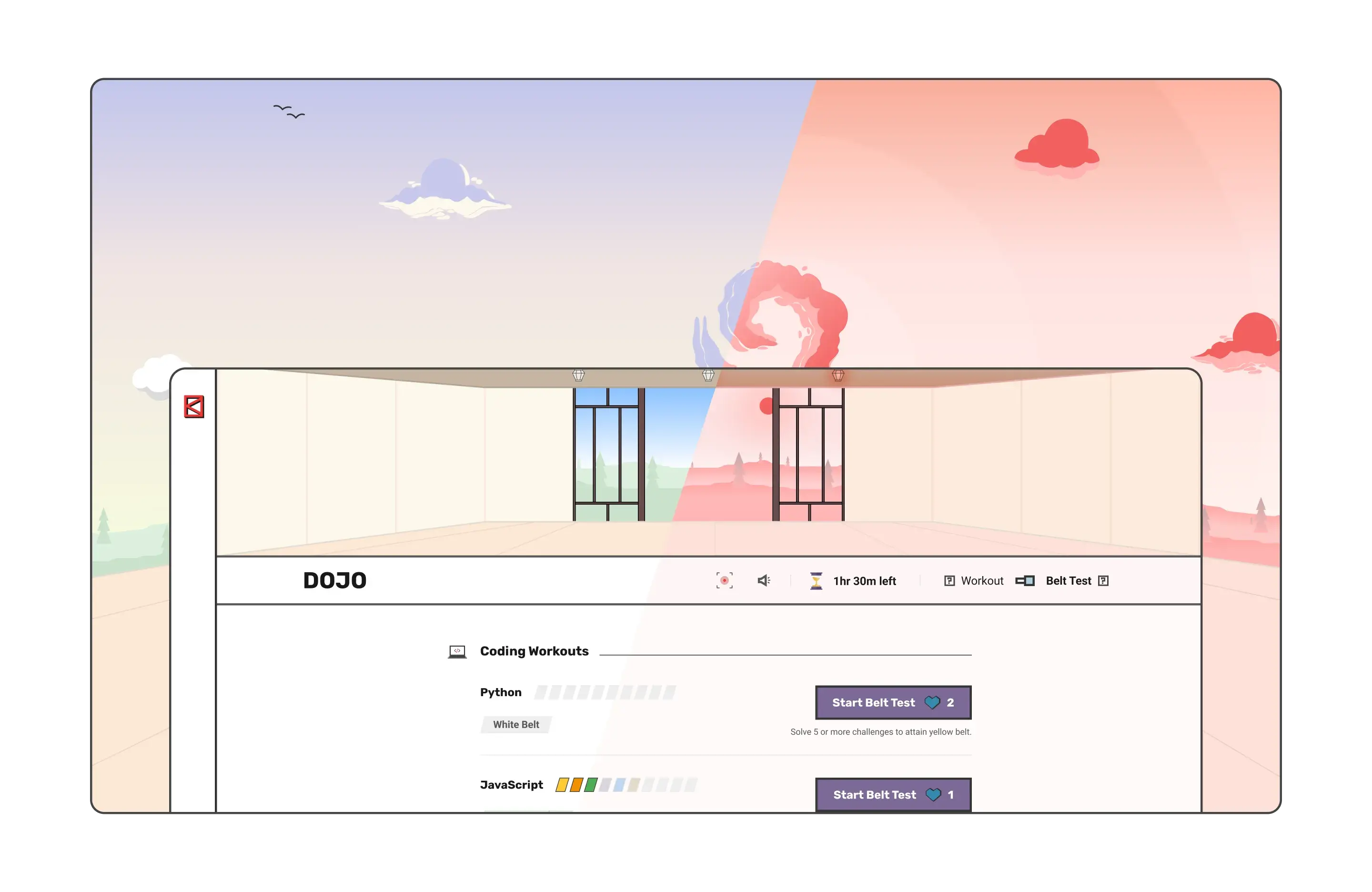
The Problem
Students lacked a motivating and engaging environment to practice coding. relying on external tools caused confusions in terms of assessment and questioned integrity. We identified that students struggle with:
- Lack of engaging, self-paced practice tools
- Low sense of accomplishment after completing tasks
- Poor structure for tracking growth beyond raw output
- Dull, repetitive UX with no narrative or progression system
We needed a platform that inspires learners to return consistently, by making the journey visible, adding challenge and reward, and making coding feel like progress, not punishment.
Opportunity
This created an opportunity to design a gamified coding platform that:
- Offers a safe space to practice freely and fail forward
- Uses themed challenges and progressive reward mechanics
- Provides visual structure around growth, skill, and mastery
- Creates delight through immersive sound, visuals, and storytelling
Target Users
- Beginner to advanced learners seeking structured, motivating coding practice
- Mentors who facilitate Belt Tests and track student growth
- Internal Users authoring and monitoring challenges
Key Deliverables
- A dual-mode experience for Practice vs. Belt Tests
- A gamified progression system modeled after martial arts belts
- A themed, immersive interface complete with visuals, music, and feedback loops
- High-integrity mechanics for high-stakes challenges
My Role 👤
As the sole product designer for Dojo, I managed the complete design process, which included:
- Conducted researches and identified insights
- Brainstormed with stakeholders and ideated potential solutions
- Visualised the solutions from wireframes to high-fidelity mockups.
- Prototyped, tested, and iterated based on real student usage.
- Collaborated directly with developers for implementation and QA.
Approach & Process
User Research
Conducted interviews and surveys with coding students and mentors to understand their learning challenges and motivational triggers. Gathered insights on the ideal balance between challenge and engagement in a gamified learning environment.
Key motivations:
- Students craved purpose behind each session
- Music and visuals played a strong role in emotional immersion
- Game mechanics (levels, badges, belts) sparked long-term engagement and motivations
We also learned that learners needed low-pressure zones i.e., practice modes to build confidence before attempting high-stakes tests.
Brainstorming & Ideation
Collaborated with stakeholders to define key requirements, such as integrating martial arts themes with coding practice. Generated ideas through sketching and mind mapping, laying the groundwork for the dual-mode approach (Workout Mode and Belt Test Mode).
Wireframing & Prototyping
Created low-fidelity wireframes to outline the app layout, emphasizing a distraction-free code editor and intuitive navigation between modes. Developed interactive prototypes to simulate the user flow and gather feedback from stakeholders and students.
High-Fidelity Design
Translated wireframes into detailed, high-fidelity designs with a focus on thematic consistency and clarity. Crafted custom illustrations and selected a cohesive color palette that echoes martial arts aesthetics. Designed clear visual indicators for progress and belt levels.
- Workout Mode A practice-focused mode where students can solve coding challenges at their own pace, enhancing skills in a low-pressure environment.
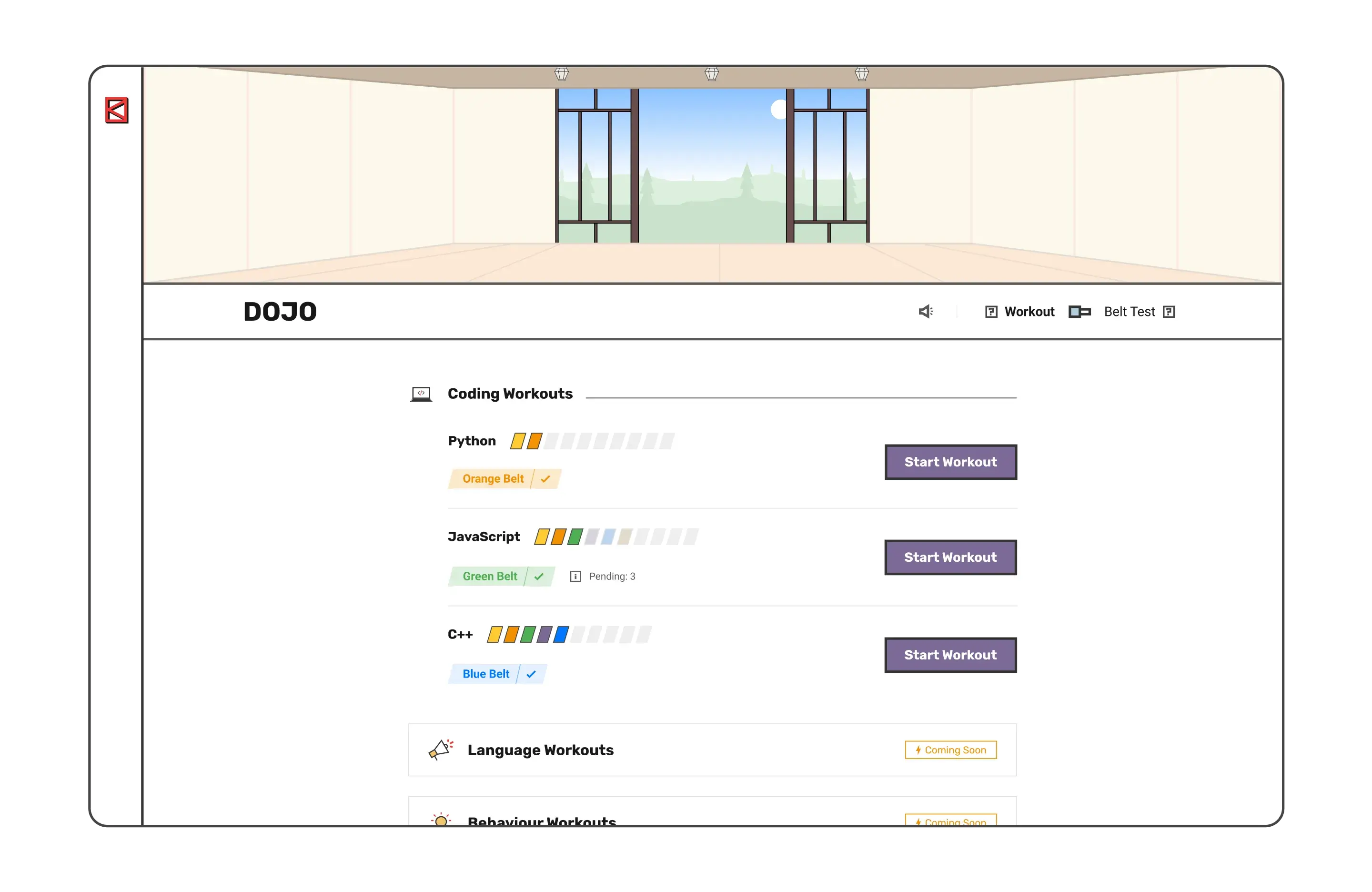
- Belt Test Mode A high-stakes mode that challenges students with advanced tasks. Upon activation (with OTP verification), martial arts-themed background music sets the tone, and students earn belts that symbolize their progress and mastery.
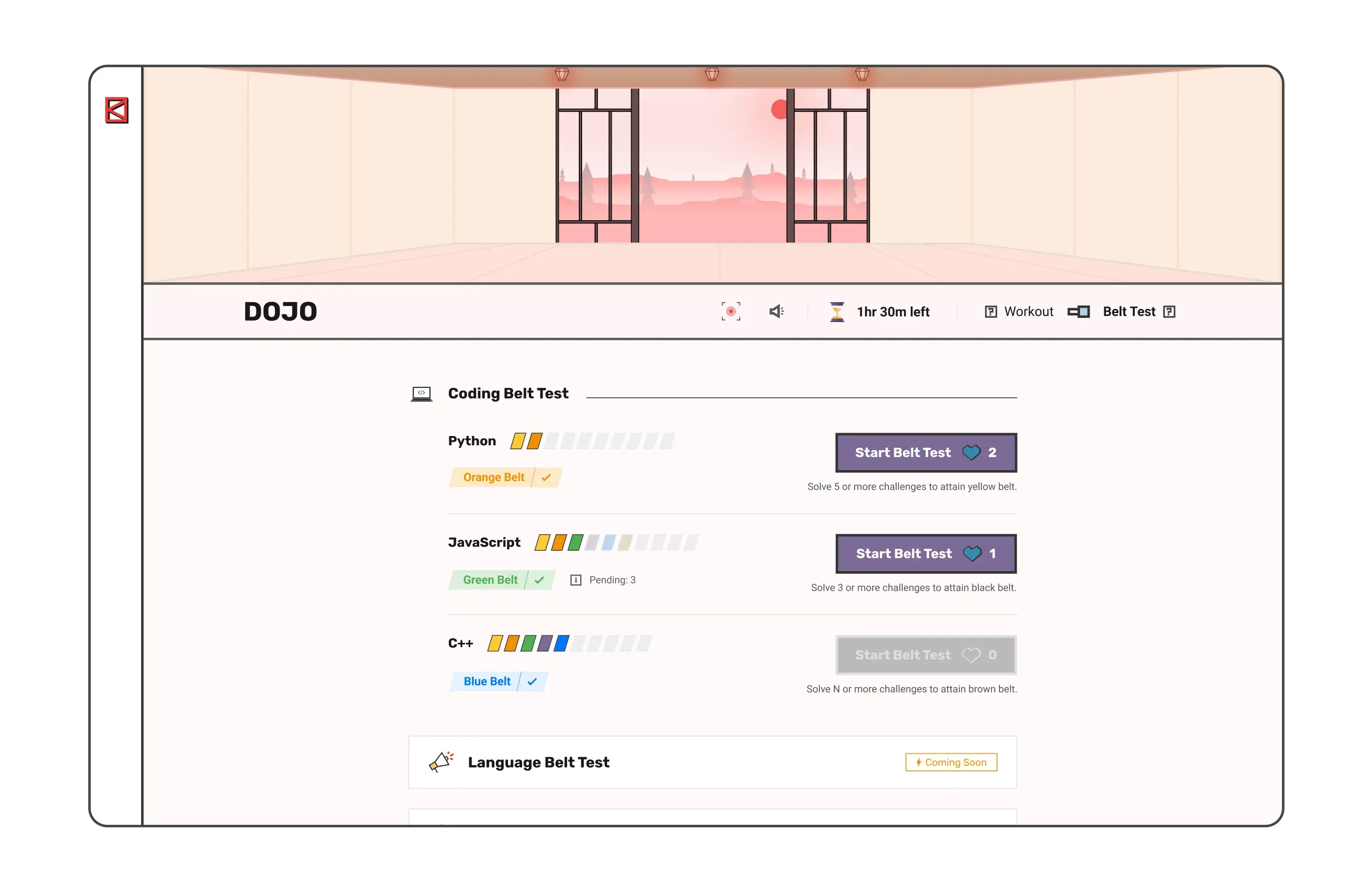

Interaction Design & Immersive Experience
Designed smooth transitions between different coding challenges and modes. Integrated dynamic visual and auditory elements, including martial arts-themed background music for Belt Test Mode and customizable audio controls, to enhance immersion without sacrificing usability.

Custom illustrations and carefully curated audio tracks further enhance the martial arts theme, creating a cohesive and immersive learning experience.
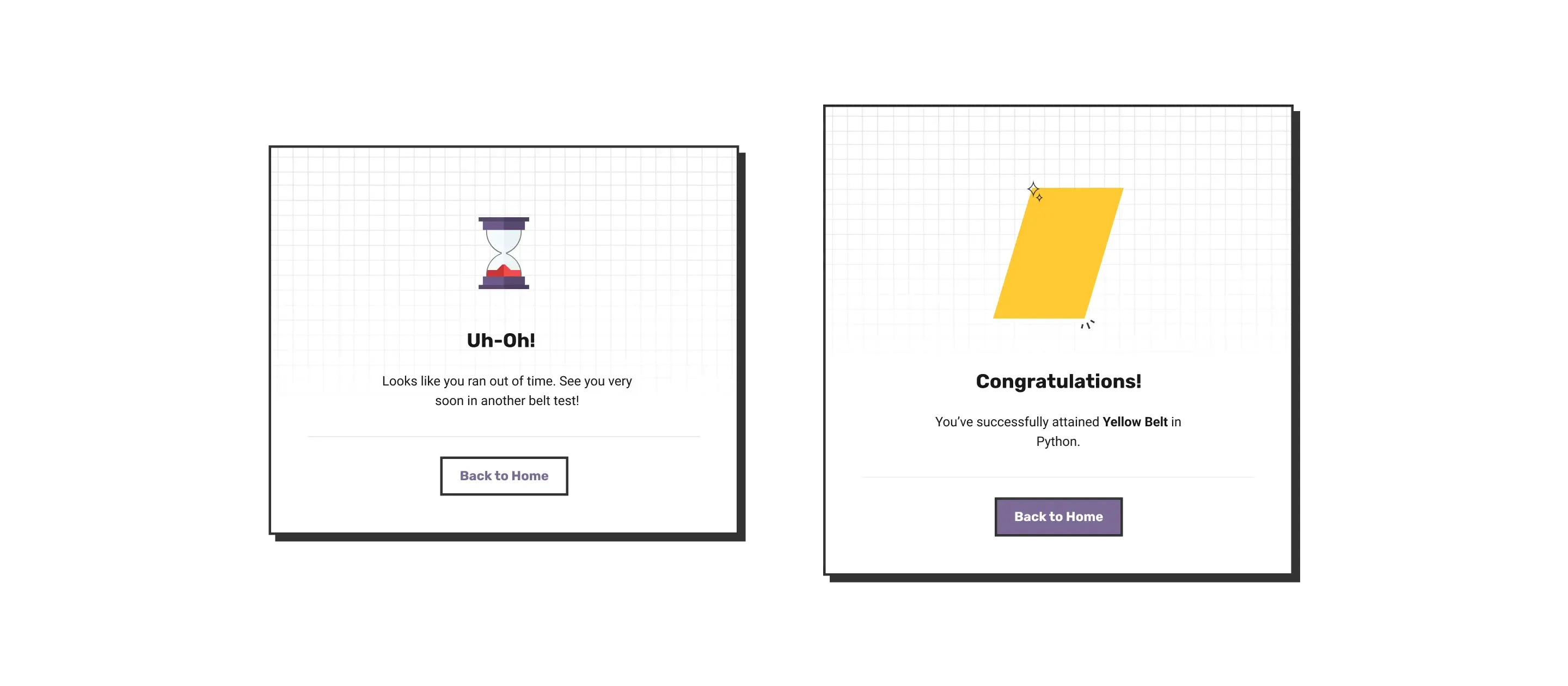
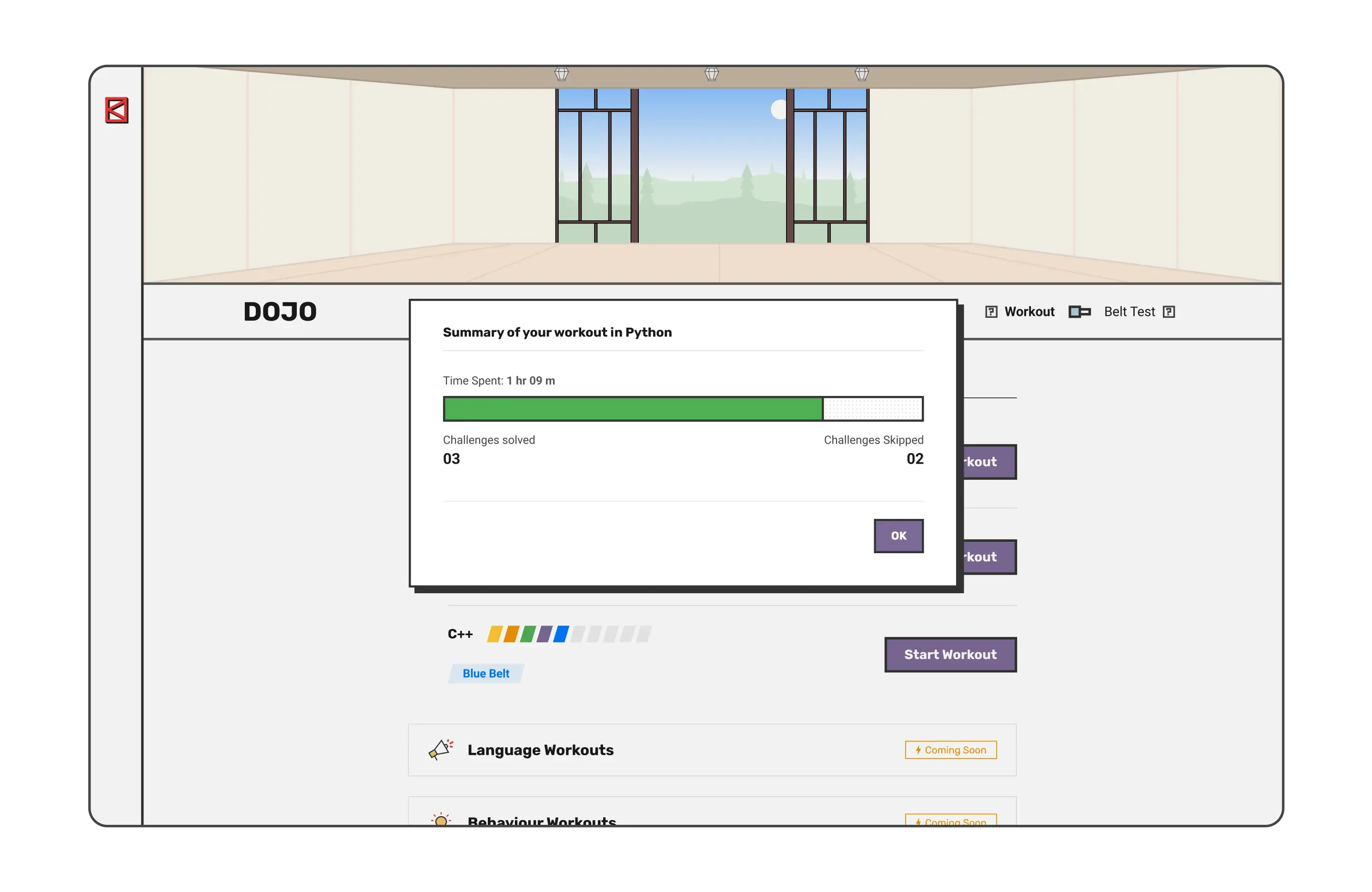
Facilitating High Integrity Events
Implemented an OTP (One-Time Password) system for activating Belt Test Mode. This ensured that high-stakes tests were conducted in a controlled environment, reinforcing the value of earning belts and maintaining the integrity of the challenge.
User Testing & Iteration
Conducted multiple rounds of usability testing with students and mentors to assess the intuitive nature of the code editor, the clarity of the gamified elements, and the overall immersive experience. Iterated on the design based on real-time feedback to optimize both visual and interactive elements.
This helped us in creating a simple, distraction-free code editor that allows students to write code effortlessly.
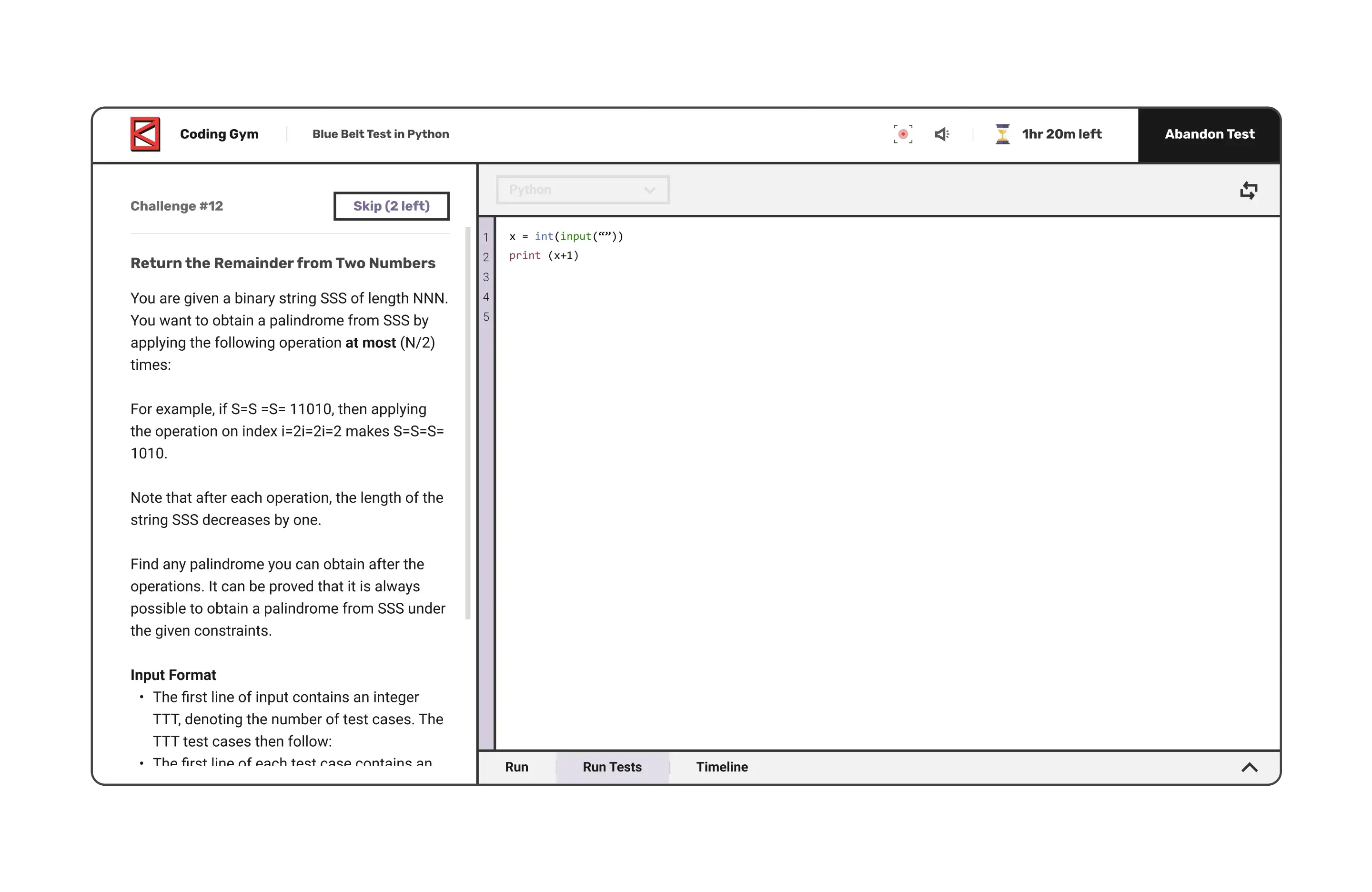
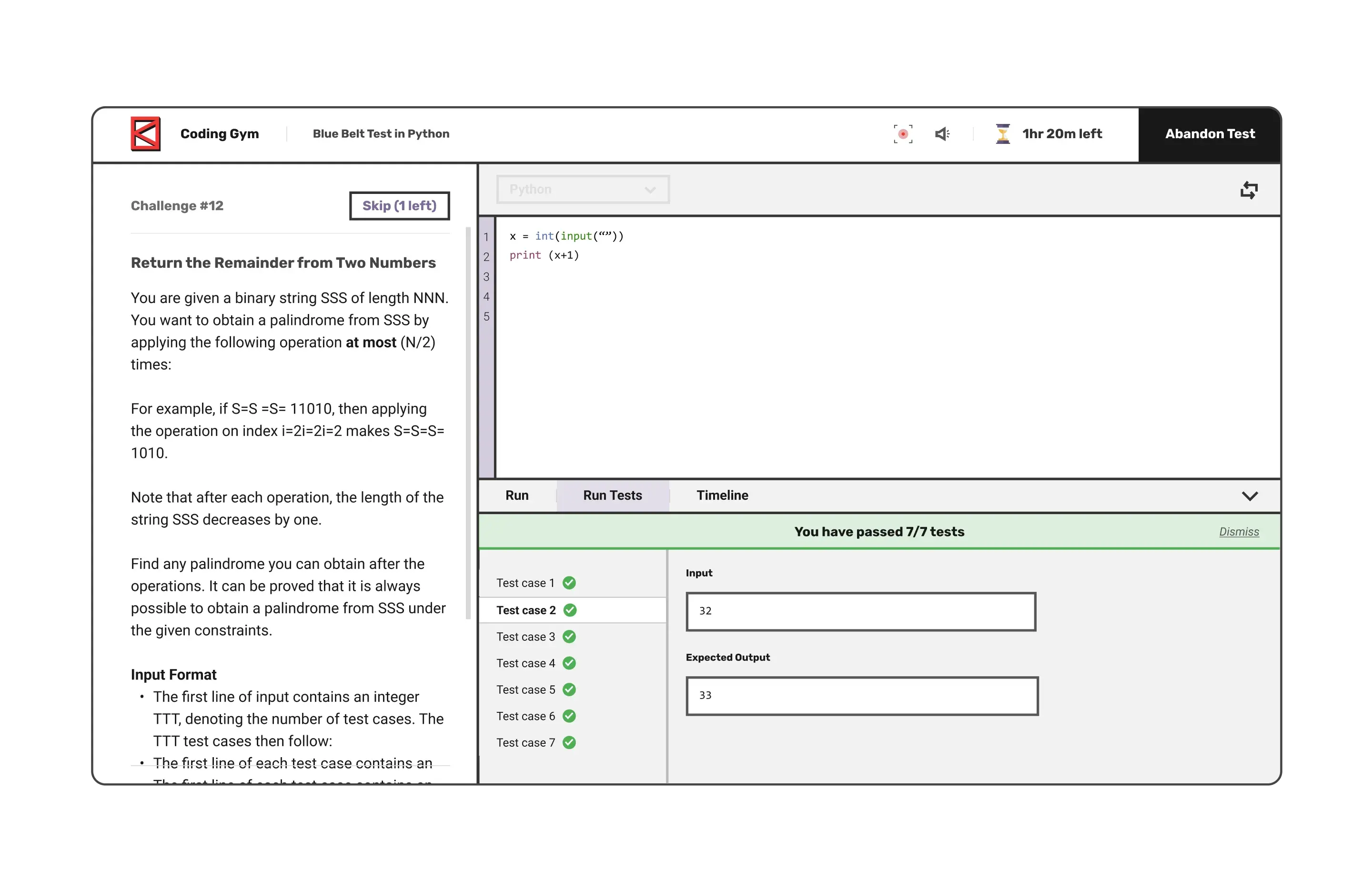
Collaboration & Developer Handoff
Coordinated closely with developers to ensure the design was faithfully implemented. Provided detailed design assets and specifications, ensuring a seamless transition from design to production.
Final Testing & Launch
Performed final usability checks to confirm that all gamification and interactive elements worked harmoniously. Ensured that both modes provided a smooth, engaging experience before launching the platform.
Outcomes & Impact
Dojo reimagines the way students engage with programming by making the journey itself exciting. The platform delivers:
- ✅ Purposeful practice through dual modes that separate skill-building from practice
- ✅ Gamified motivation via belts, and visualized progress
- ✅ Immersive design using illustrations, soundtracks, and subtle transitions
- ✅ High-integrity assessments that reward effort with meaningful achievements